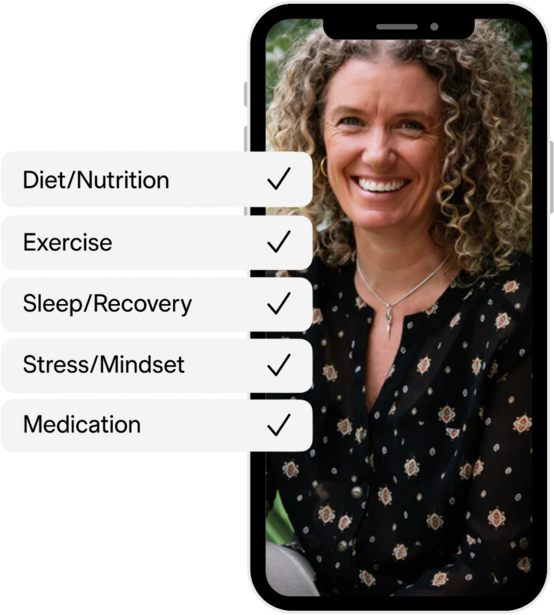Christmas Special - Save up to 40% today with code INTRO50
Choose how you’d like to begin
CGM program
Optimise metabolism in real time with sensors

Advanced Blood Test
Get your baseline health report and personalised plan




It is pretty common knowledge that too much sugar isn’t the greatest for you. Hundreds of years ago, buying a packet of sugar was equivalent to a week’s wage, now it is cheaper than vegetables!
As sugar was so attractive and addictive, production became cheaper. Merchants made so much money, they referred to sugar as “white gold”.
Simple carbohydrates (also called simple sugars e.g. table sugar) contain one or two sugar molecules, whereas complex carbohydrates contain three or more. Carbohydrates are easy to eat but hard to use. It is estimated that close to 50% of the world’s population are unable to metabolise carbohydrates well. This is due to a combination of factors:
So, what’s the problem with sugar?
Let’s break it down.
Table sugar is called sucrose, it is made up of two molecules: glucose and fructose.
Glucose is the fuel the cells readily use. Fructose is not used by the body at all. Fructose is two times sweeter than glucose and when eaten in excess, gets stored in the liver as fat. This was an evolutionary survival advantage and a way for humans to store fat for the winter.
Because fructose isn’t used by the body, it doesn’t require hormonal regulation. So without leptin (satiety hormone) and insulin, you don’t feel full and therefore there is no off switch.
When you get your fructose from fruits such as an apple, the feeling of fullness comes from the fibre, not the hormones, but if you get your fructose from table sugar or high fructose corn syrup, you can eat a large amount without feeling full so any excess will be efficiently turned into fat. Remember, fat cells produce inflammation, hormones and pro-oxidant chemicals which makes you more insulin resistant.
This is why the food industry developed high fructose corn syrup to add to processed foods. It is cheap, sweeter than sucrose, and doesn’t suppress your appetite. This is the equivalent of “white platinum”.
Can you imagine how excited processed food companies were?
So, lowering fructose is a key strategy to supporting gut health, liver health and reducing insulin resistance. This doesn’t mean no fruit! Just try to keep to the two fruits per day recommendation.
Watch out for high fructose sweeteners such as honey, high fructose corn syrup, agave, coconut sugar, dates and dried fruits. Opt for things like fresh berries and citrus fruits where possible. Yum!
Subscribe to our newsletter & join a community of 20,000+ Aussies

It is pretty common knowledge that too much sugar isn’t the greatest for you. Hundreds of years ago, buying a packet of sugar was equivalent to a week’s wage, now it is cheaper than vegetables!
As sugar was so attractive and addictive, production became cheaper. Merchants made so much money, they referred to sugar as “white gold”.
Simple carbohydrates (also called simple sugars e.g. table sugar) contain one or two sugar molecules, whereas complex carbohydrates contain three or more. Carbohydrates are easy to eat but hard to use. It is estimated that close to 50% of the world’s population are unable to metabolise carbohydrates well. This is due to a combination of factors:
So, what’s the problem with sugar?
Let’s break it down.
Table sugar is called sucrose, it is made up of two molecules: glucose and fructose.
Glucose is the fuel the cells readily use. Fructose is not used by the body at all. Fructose is two times sweeter than glucose and when eaten in excess, gets stored in the liver as fat. This was an evolutionary survival advantage and a way for humans to store fat for the winter.
Because fructose isn’t used by the body, it doesn’t require hormonal regulation. So without leptin (satiety hormone) and insulin, you don’t feel full and therefore there is no off switch.
When you get your fructose from fruits such as an apple, the feeling of fullness comes from the fibre, not the hormones, but if you get your fructose from table sugar or high fructose corn syrup, you can eat a large amount without feeling full so any excess will be efficiently turned into fat. Remember, fat cells produce inflammation, hormones and pro-oxidant chemicals which makes you more insulin resistant.
This is why the food industry developed high fructose corn syrup to add to processed foods. It is cheap, sweeter than sucrose, and doesn’t suppress your appetite. This is the equivalent of “white platinum”.
Can you imagine how excited processed food companies were?
So, lowering fructose is a key strategy to supporting gut health, liver health and reducing insulin resistance. This doesn’t mean no fruit! Just try to keep to the two fruits per day recommendation.
Watch out for high fructose sweeteners such as honey, high fructose corn syrup, agave, coconut sugar, dates and dried fruits. Opt for things like fresh berries and citrus fruits where possible. Yum!
Get irrefutable data about your diet and lifestyle by using your own glucose data with Vively’s CGM Program. We’re currently offering a 20% discount for our annual plan. Sign up here.

Discover how controlling your glucose levels can aid in ageing gracefully. Learn about the latest research that links glucose levels and ageing, and how Vively, a metabolic health app, can help you manage your glucose and age well.


Delve into the concept of mindful eating and discover its benefits, including improved glucose control and healthier food choices. Learn about practical strategies to implement mindful eating in your daily life.


Understand the nuances of polycystic ovary syndrome (PCOS) testing in Australia, the importance of early diagnosis, and the tests used to effectively diagnose the condition. Also, find out when these diagnostic procedures should be considered.
